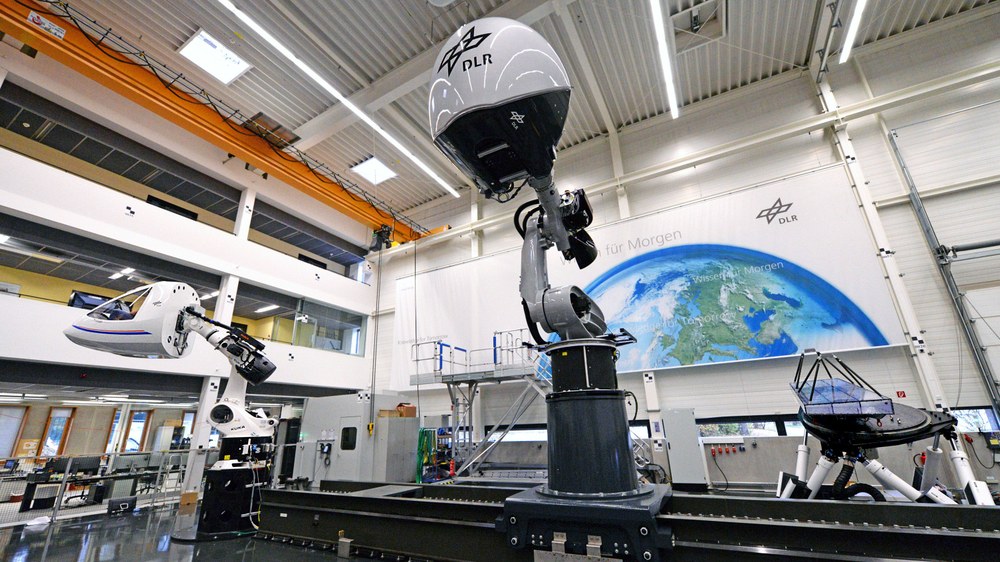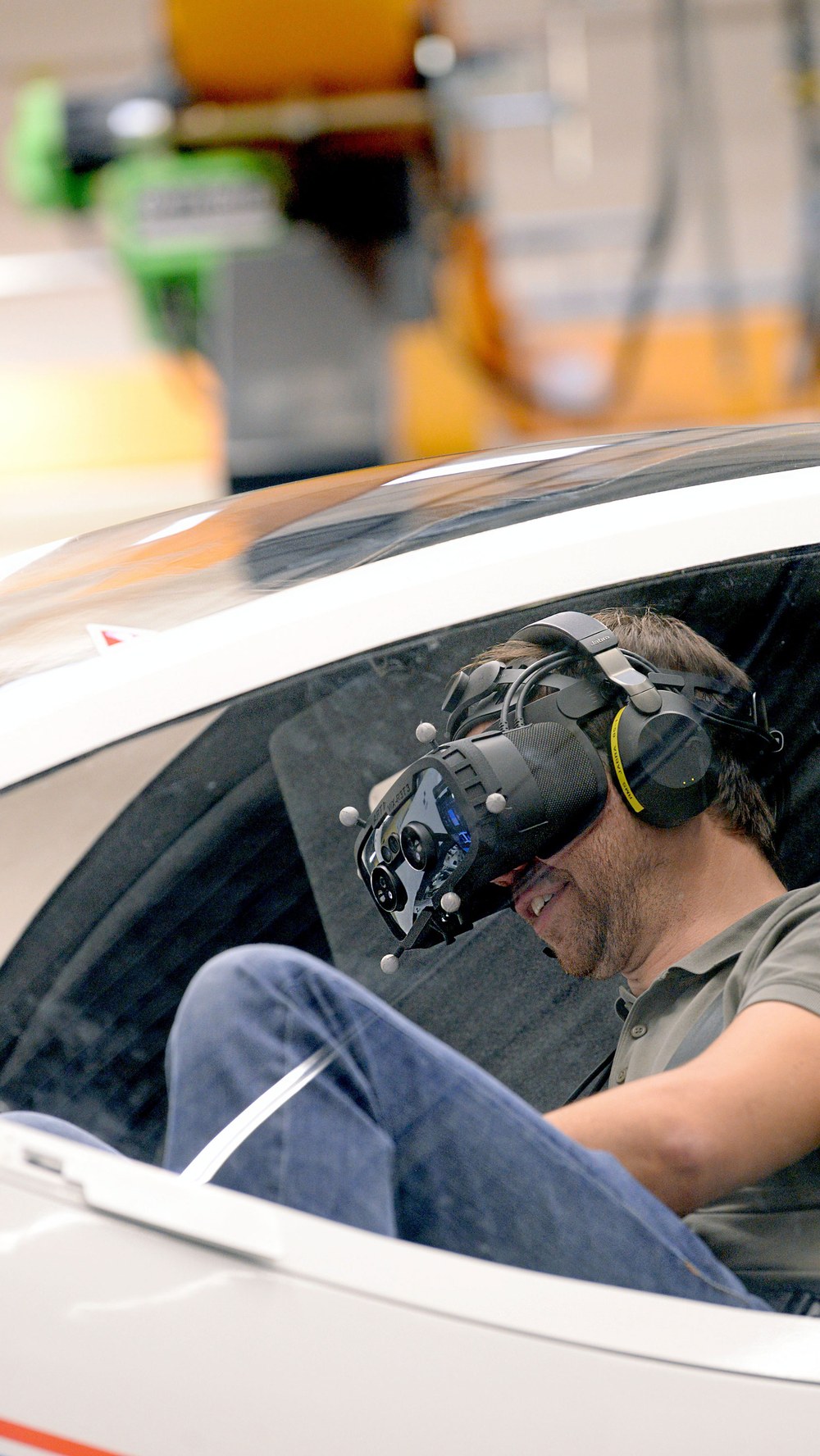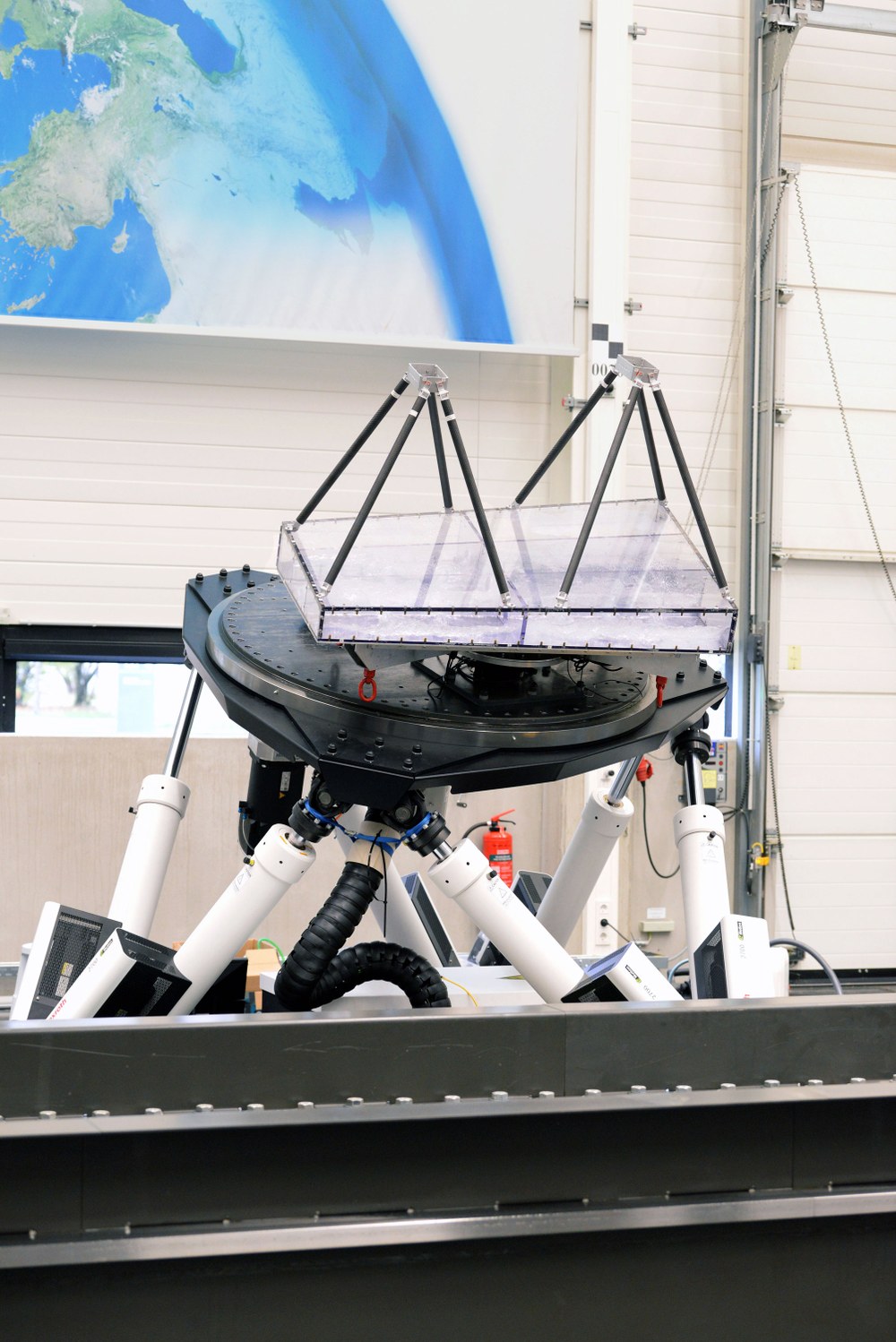Unrivalled facility for flight and driving simulations: the Dynamic Motion Simulator Center



- On 6 November 2024, the Dynamic Motion Simulation Center (DMSC) was officially opened at DLR's Oberpfaffenhofen site.
- The new research platform for flight and driving simulations supports a wide range of applications, including pilot training, the development of mixed reality technologies and human factor studies.
- A special feature of the DMSC is that two of the simulators in rotation offer a significantly larger workspace and more flexibility than conventional simulators.
- Focus: Aviation, robotics, virtual reality
On 6 November 2024, the German Aerospace Center (Deutsches Zentrum für Luft- und Raumfahrt; DLR) inaugurated the Dynamic Motion Simulation Center (DMSC) at its site in Oberpfaffenhofen. The facility – the first of its kind in the world – enables highly dynamic and therefore very realistic flight and driving simulations. The DMSC comprises three motion simulators equipped with interchangeable cockpits, with each simulator operating independently or in synchronisation with the others for flexible configurations. This innovative research facility supports a wide spectrum of use cases, ranging from pilot training and the development of mixed reality technologies to control engineering and studies into human factors, such as motion sickness or human responsiveness. In addition, the DMSC is available for collaborations with industry and research.
A unique feature of the DMSC is that two of its simulators are based on industrial robotic arms. These provide a significantly larger workspace and greater flexibility than traditional simulators, especially when rotated, which is ideal for simulating agile systems such as small aircraft, air taxis or helicopters. The third simulator, a hexapod, is a resilient moveable platform based on six actuators.
Simulations for technology and people
The Robotic Motion Simulator's extreme tilt angle allows for highly realistic manoeuvres to be carried out. Pilots and developers can safely test upside-down flight scenarios, and the simulator's unique 'slip ring' configuration permits continuous rotation around both the longitudinal and vertical axes. The technologies underpinning the Robotic Motion Simulator have been in development at DLR for approximately 20 years. Today, the system consists of an industrial robotic arm with an attached cockpit pod that moves along a ten-metre-long rail, allowing users to experience representative dynamic forces. ESA astronaut Roberto Vittori has even used the Robotic Motion Simulator to test various lunar landing manoeuvres.
Human response is another factor that can be examined through these simulations. Researchers can, for example, explore how specific flight or driving movements impact the human body. They can investigate questions such as how well the brain adapts to both control forces and the mechanics of flight controls, how quick reaction times are under stress, and how early detection and treatment of motion sickness in pilots might be achieved.
Mixed reality in the cockpit
The Personal Air Vehicle Simulator (PAVSIM) is the latest addition to the Dynamic Motion Simulator Center. Like others in the facility, the PAVSIM is based on an industrial robotic arm. However, it features a two-seater cockpit, making it ideal for developing vertical take-off and landing aircraft such as air taxis or helicopters – a development focus for the DLR Institute of Flight Systems. The PAVSIM also supports the testing and development of mixed-reality technologies. While pilots control and feel the simulator's movements, they experience a virtual environment through VR goggles. For a fully immersive environment, the real-time visualisations are also displayed in the cockpit windows, and the cockpits can be adapted flexibly to suit various applications.
The technology behind all the simulators at the Dynamic Motion Simulator Center is fully developed by DLR. This includes the driving and flight dynamics model, simulator trajectory planning, visualisations, scenery preparation, cockpit design and middleware. Customer software can be integrated via defined open interfaces. This also applies to the centre's third major simulator – a highly dynamic hexapod, dubbed DynSim.
Controlled spin cycle
With a working area of roughly one cubic metre, the Dynamic Motion Simulator (DynSim) is very compact but designed for exceptionally fast and powerful rotations. It can hold objects such as fuel tanks and rotate them continuously around the longitudinal and vertical axes. This capability means that fuel movement within a tank can be simulated, along with its impact on the overall dynamics of aircraft and vehicles.
For such dynamic applications, the development team has expanded the standard hexapod design. The DynSim now features eight drive axes and has a platform that can rotate at up to 50 revolutions per minute. The platform is also equipped with an arm that can rotate cockpits or equipment around the roll axis at up to 100 revolutions per minute. This allows the simulator to precisely spin objects weighing up to 700 kilograms in all directions or perform complex simulation movements.
Open for collaboration
The opening ceremony of the Dynamic Motion Simulator Center, attended by prominent figures from industry and research, was led by Markus Fischer, DLR Divisional Board Member for Aeronautics; Anke Pagels-Kerp, DLR Divisional Board Member for Space Research and Technology; and Martin Otter, Acting Director of the DLR Institute of System Dynamics and Control. Guests had the opportunity to experience first-hand the facility's capabilities and its focus on user-oriented design. The day's events included a series of presentations on the ongoing research at the DMSC and a guided tour of DLR's flight operations in Oberpfaffenhofen. The DMSC is now open for both internal and external projects.
